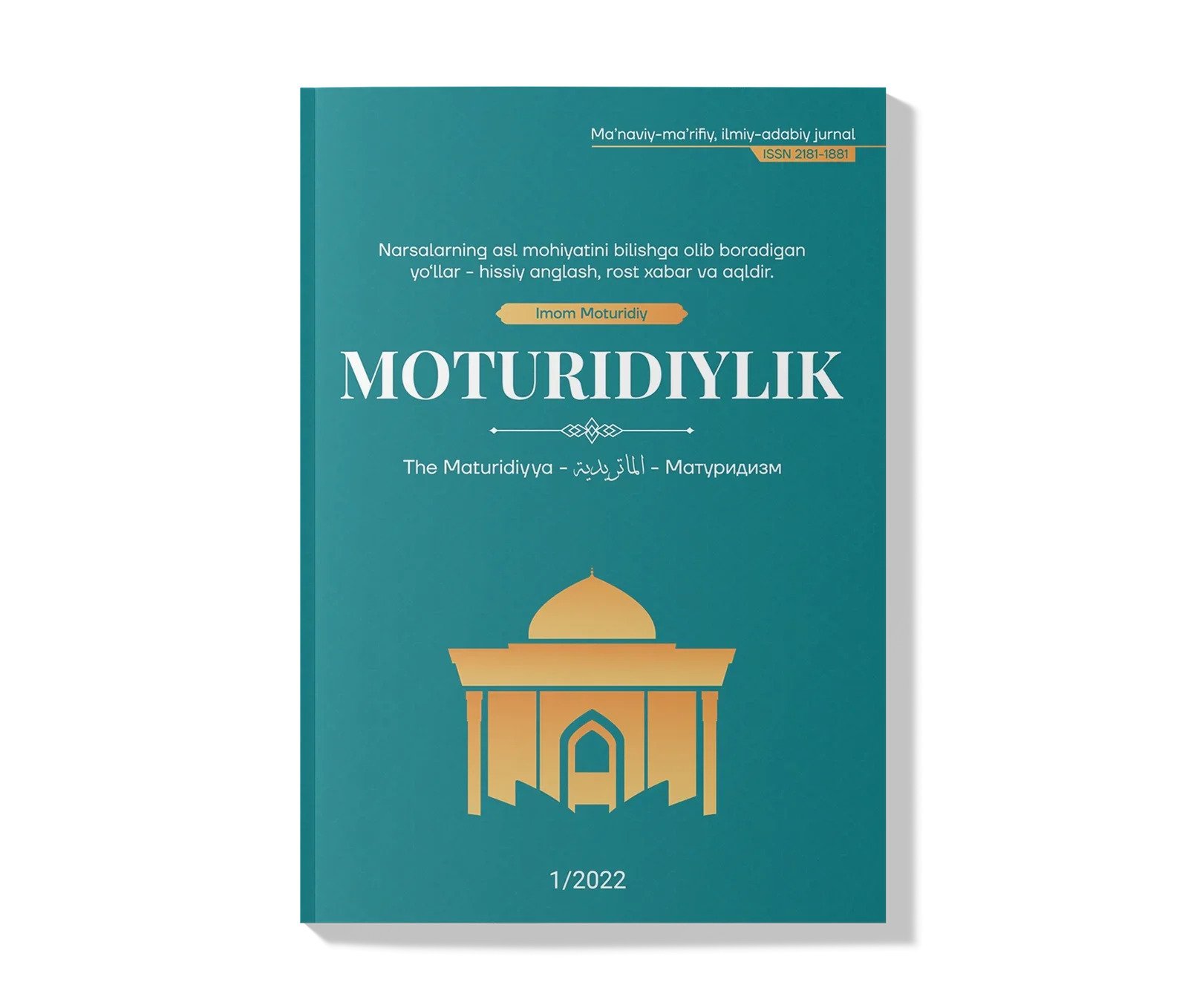MODERATION OF THE MATURIDIYYA SCHOOL: METHOD AND PRACTISE
DOI:
https://doi.org/10.47980/MOTURIDIY/2022/4/7Keywords:
Imam Maturidi, Maturidiyya school, Kharijites, Mu’tazila, Mushabbiha, Murji’ah, Ahl al-Sunnah wal Jama’ah, moderation, temperance, extremism, sectarian difference, controversy in beliefAbstract
This article is devoted to an important issue related to the cultural life of Muslims in the era of irrational intolerance, and an attempt was made to provide examples of the logical arguments of our scholars in understanding the Qur'an and Sunnah. Then there is a talk about the doctrine of Maturidiyya, which made a significant contribution to the formation of Islamic thought. The first issue of the article begins with defining the meaning of the concept of Wasatiyya in the Qur'anic teaching and the dictionary. Secondly, ideological conflicts in the region of Mawarannahr, where the doctrine of the Hanafi sect flourished, will be highlighted. This doctrine was systematized by Imam Maturidi based on his knowledge received from his teachers whose lineage reaches Abu Hanifa. It is intended to reveal the situation that contributed to the establishment of the foundations of this dogmatic school during the period when the sects, groups, and teachings increased in this region. Then, thirdly, Imam Maturidi's approach to justifying the issue of moderation is touched upon, and its main features are clarified. Imam Maturidi would not accept words without evidence. His acceptance of interpretation depended on its compatibility with reason and narrative, or at least on their non-contradiction. In the fourth point, we choose three issues and try to explain Maturidi's way of moderation between ifrat and tafrit. In this regard, we will discuss the issues of the person who commits a great sin, the deeds of the servants, and the attributes of God Almighty. In these three issues, we will clarify how the doctrine of Maturidiyya took a mediocre path. Then we will conclude the study with the most important results and the main ideas that it contains.
References
Taqiyuddin al-Subki. (1995). Al-Ibhaj fi Sharh al-Minhaj. Beirut: Darul kutb al-ilmiyya.
Abu Abdullah al-Muqaddasi. (1991). Ahsan al-Taqasim fi Ma’rifat al-Aqasim. Cairo.
Ahmad Sa’d al-Damanhuri. (2018). Al-Imam al-Maturidi wa Manhaj Ahl al-Sunnah fi Tafsir al-Qur’an. Dar al-Nur al-Mubin.
Abdul Fattah al-Maghribi. (1985). Abu Mansur al-Maturidi wa ara’uhu al-kalamiyya. Maktabatu Wahba.
Abul Husayn al-Khayyat. (Year of pulication is unknown). Al-Intisar war Radd ‘ala Ibn al-Rawandi. Cairo: Maktaba ath-thaqafa ad-diniyya.
Abu Mansur al-Maturidi. (2005). Ta’wilat Ahl alSunnah. Beirut: Darul kutub al-ilmiyya.
Abu Mansur al-Maturidi. (2004). Ta’wilat Ahl alSunnah. Dar ar-Risala.
Abul Mu’in al-Nasafi. (1993). Tabsira al-Adilla. Turkey: Diyanet Vakfı Yayınları.
Wasili Bartold. (1981). Turkistan. Quwait: al-Majlis al-Watani.
Al-Imam Abu Hanifa. (Year of pulication is unknown). Al-Fiqh al-Akbar. Cairo: al-Maktaba al-Azhari.
Abu Hamid al-Ghazzali. (1940). Qanun al-Ta’wil. Matba’a al-Anwar.
Abu Mansur al-Maturidi. (Year of pulication is unknown). Kitab al-Tawhid. Beirut: Daru Sadir.
Ibn Hajar al-Athqalani. (2002). Lisan al-Mizan. Darul Bashair.
Shamsuddin Saffarini. (1982). Lawami’ al-Anwar alBahiyya. Damascus: Muassasatu Khafiqin.
Zaynuddin al-Hanafi. (1999). Mukhtar al-Sihah. Beirut: al-Maktaba al-Asriyya.
Al-Mas’udi. (2005). Muruj az-Zahab. Beirut: alMaktaba al-Asriyya.
Ahmad bin Faris. (1979). Mu’jam Maqayis al-Lughah. Darul Fikr.
Muhammad Hasan Jabal. (2010). Al-Mu’jam alIshtiqaqi. Cairo: Maktaba al-Adab.
Abul Hasan al-Ash’ari. (1980). Maqalat al-Islamiyyin. Wiesbaden: Daru Faraniz.
Abul Hasan al-Ash’ari. (1950). Maqalat al-Islamiyyin. Cairo: Maktaba al-Nahda.
Adududdin al-Iji. (Year of pulication is unknown). Al-Mawaqif fi Ilm al-Kalam. Beirut: Alam al-Kutub.
Salahuddin al-Safadi. (2000). Al-Wafi bil-Wafayat. Beirut: Daru ihya at-Turath al-Arabi.
Downloads
Submitted
Published
How to Cite
Issue
Section
License
Copyright (c) 2025 Ahmad Saad DAMANHURI (Author)

This work is licensed under a Creative Commons Attribution-NonCommercial 4.0 International License.


















